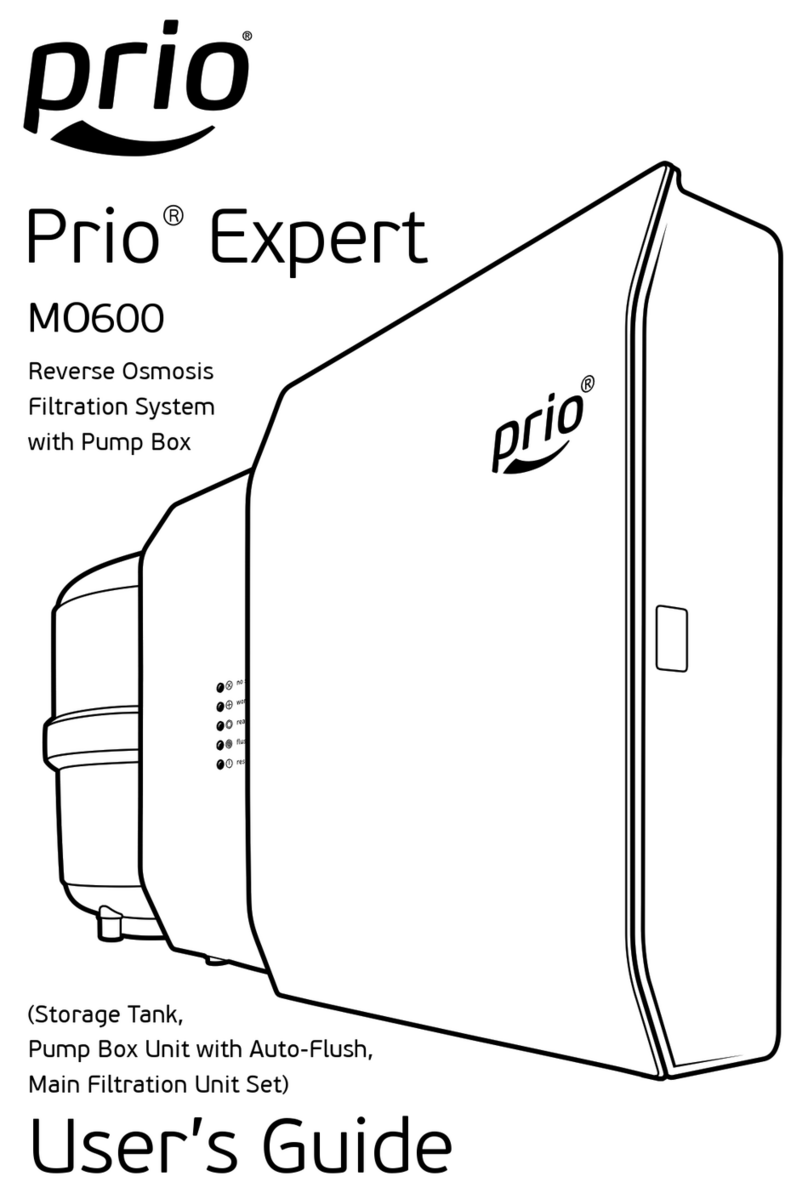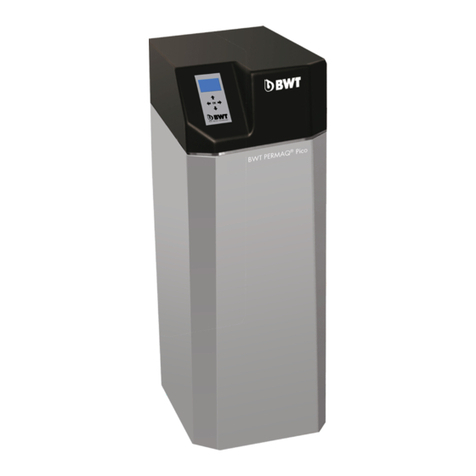
2
Before operating this appliance, please read the instructions carefully. You
may want to save this guide for your future reference. Failure to follow the
instructions or meet the operating requirements may lead to the product’s
failure, malfunction, property damage or personal injury.
Safety Warning
■Plug the ltration unit into an electrical outlet only aer you nish the in-
stallation.
■Check if the voltage indicated on the ltration unit or power adapter corre-
sponds to the local mains voltage before you connect the appliance.
■Do not use the ltration unit if it is damaged in any way. Take it to an autho-
rized service center for repair.
■Do not open the power adapter, low-pressure switch, high-pressure switch
and pump. There are no serviceable parts inside.
■When unplugging the ltration unit from the mains, do not pull on the pow-
er cord. Avoid touching the plug with wet hands.
■Do not place ltration unit near the sources of heat, radiators, etc. Do not
place it in a tightly closed space where it may overheat.
■Keep the appliance out of reach of pets or other animals.
■In case of leakage malfunction or water presence around the appliance shut o
the electrical power to the circuit rst, then pull the plug out of the electrical outlet.
■Remove the plug from the electrical outlet and close the inlet valve during your
vacations or other extended periods of time when the appliance is not in use.
■Unplug the pump unit from the electrical outlet while servicing the ltration
unit, and changing the membrane or lters.
■Do not use the appliance if operating requirements such as water tempera-
ture/water pressure/electrical supply, etc. are not met. There may be other
local regulations to comply with.
■Do not use the appliance with water that is microbiologically unsafe or of
unknown quality without adequate disinfection before or aer the system.
■The ltration unit was not designed to be used with power cord extenders,
power lters, outlet splitters, etc.
■Do not use the waste water produced by the appliance for drinking or cooking.
■Never store or operate the appliance in direct sunlight.
■This appliance is not intended for use by persons (including children) with
reduced physical, sensory or mental capabilities, or lack of experience and
knowledge, unless they have been given supervision or instruction con-
cerning use of the appliance by a person responsible for their safety.
■Children should be supervised to ensure that they do not play with the ap-
pliance.
■At the end of its life, the appliance should be disposed o in an appropriate
manner.
Disposal
Old appliances still contain many recyclable materials. Therefore, please take
used unit to your retailer or recycling center so that it can be recycled.





























